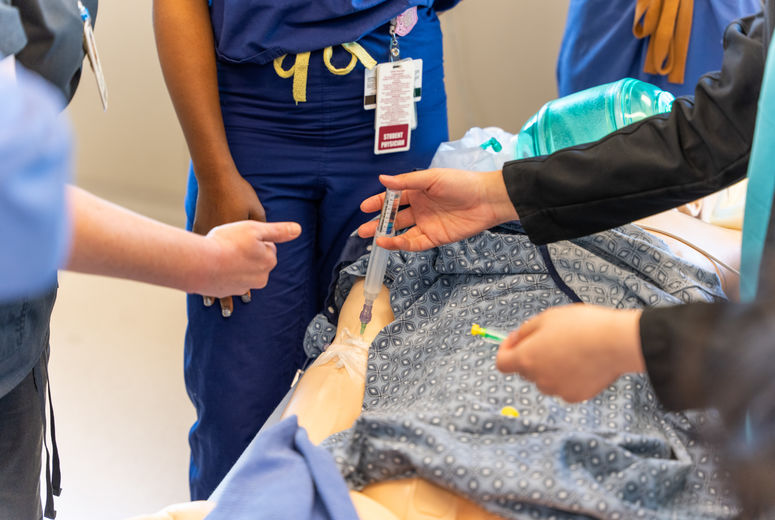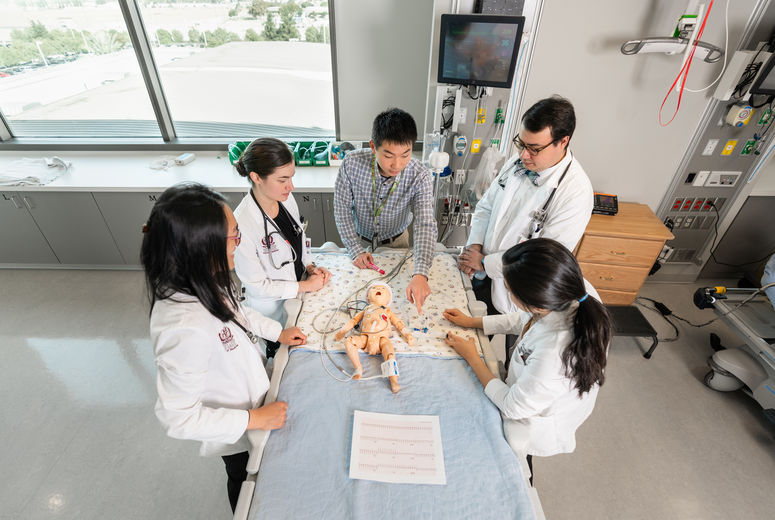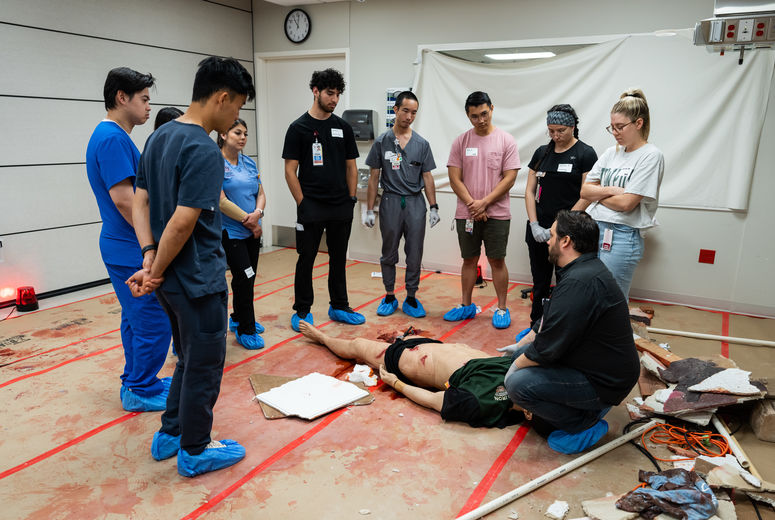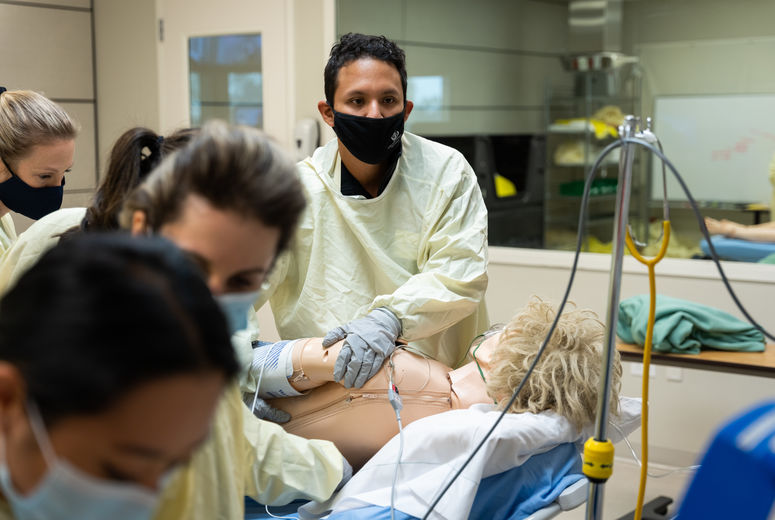Simulation Center
The Medical Simulation Center (MSC) is an 8,000 square foot, state-of-the-art virtual hospital located on the 4th floor of the Centennial Complex. Each of the center’s training areas is designed to reflect the realities encountered in actual care settings. The design of the MSC facilitates multiple learning environments from a single, profession/specialty simulation to interdepartmental, interprofessional and inter-facility simulations. The faculty and staff uses their expertise to maximize the design and functional capabilities of the center.
Each simulation room is connected to an observation/debriefing room separated by a one-way mirror with large, flat-screen televisions to provide observers and participants with several views of the simulation. These rooms are also used to provide debriefing for the participants after each simulation.
The MSC is equipped with leading-edge audio/video technology. Each simulation room is equipped with multiple cameras with 360° viewing and highly sensitive microphones. The Control Room is the “hub” of the Medical Simulation Center, hosting numerous computers that control the manikins’ functions, vital signs, equipment and recording. Technicians remotely control the cameras in each simulation to capture the details of the participant’s movements and interactions during the simulation. In addition, the center is also home to an augmented reality/mixed reality room. This environment immerses the learner into a virtual world which replicates sensory inputs – site, sound, touch, and scent.
The Benefits of Simulation Training
At Loma Linda University, medical simulations are an essential tool in the training of physicians, nurses, and other health professionals.
Medical simulation training bridges the gap between classroom studies and patient care. All members of the healthcare team can benefit from simulation – physicians, nurses, dentists, allied healthcare professionals to emergency responders – by offering the opportunity to not only master technical skills but also to improve critical-thinking, decision-making and communication skills. This is done in a safe learning environment that ultimately leads to a safe treatment environment for real patients.
The Medical Simulation Center prepares the next generation of healthcare professionals for tomorrow’s technologies and gives current practitioners the opportunity to sharpen their skills in a controlled environment. Using sophisticated, computers, life-size manikins, whose major organs are programmed to respond appropriately to a user’s interventions, learners hone their surgical and interventional expertise in a virtual patient care environment. Debriefing sessions follow each simulation scenario and allows the learner to receive feedback from faculty and peers while objectively critiquing their own performance.
The MSC is dedicated to creating an atmosphere of openness and collaboration between various healthcare professions. Interprofessional learning simulation empowers ALL members of the interdisciplinary healthcare team to provide safe, patient-centered, quality care while effectively utilizing clinical simulation technologies. Continued improvement in patient safety is attainable only through establishing a culture of trust, honesty, integrity, and open communication. This is not only highly effective for educating students, but for educating faculty to be leaders and facilitators in Interprofessional education, as well.




